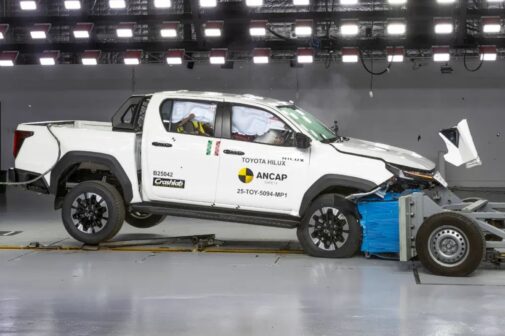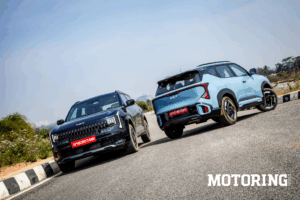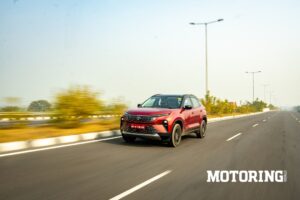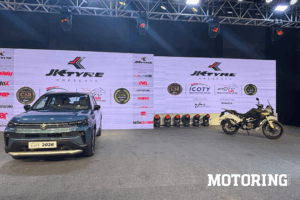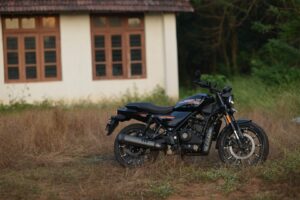‘We will never make bikes under 500cc, or even 600cc. We want to maintain a certain character which is not possible with smaller bikes,’ declared Claudio Domenicali, CEO of Ducati, at a joint interview for the Asian press at World Ducati Week 2024 held at the Misano World Circuit Marco Simoncelli in San Marino, the tiny country contained inside Italy. I suppose Ducati’s disinclination towards smaller-engined Ducatis can be equated to the European ministate in some ways. ‘Living in a bubble’ is perhaps one example, but what do I know? The collective slump of Asian shoulders in the room was a reaction indicative of valid expectations. And never mind that Ducati has already made and is racing the Desmo450 MX. Hmm…
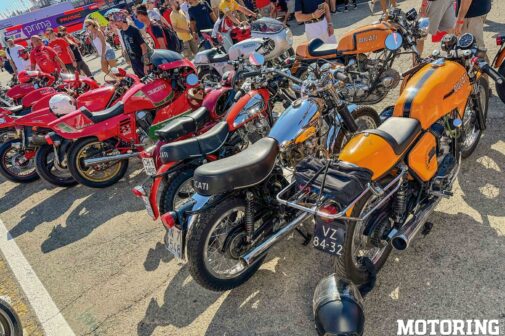
A day earlier, I found myself walking through the Ducati factory at Borgo Panigale, hallowed ground for any fan of motorcycling. I had plenty of questions for our guide, too; perhaps one too many, given that I kept holding up our little group. Riders from all over the world descend upon World Ducati Week and they’re given the option of a factory tour, and I imagine very few let that chance go. Anyway, the first part of the tour saw us standing in front of old photos on a wall, and one showed the factory in the aftermath of a WWII bombing in 1944. ‘The Americans bombed it because the Germans had occupied it,’ the guide informed us, which led to me covering up the beginning of involuntary laughter with an unconvincing cough.
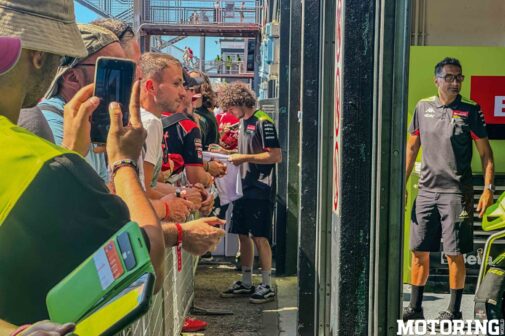
What caught my attention next was the word ‘DESI’ plastered over a section at the beginning of the line. I wondered why Ducati had paid homage to Indians in this manner until it was explained that it actually meant ‘Dual Education System Italy’, a training programme for young engineers co-run by Ducati and Lamborghini. And then I imagined those fortunate enough to go through that particular programme, what their eyes and minds must get to see and learn. All the ingredients that go into creating emotions that are rare and irreplaceable. Shortly after, we came upon a cutaway of the Superquadro engine from the Panigale, which promptly stopped working. The tour groups before ours had drained the battery running it. And anyway, the camera lenses on our phones had been stickered before we set foot on the factory floor, so it was quite okay.
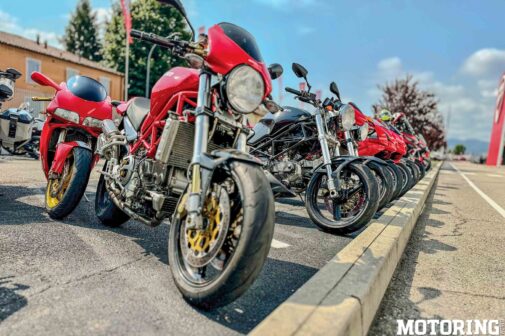
The factory itself wasn’t the biggest one I’ve been to. It didn’t have to be, either, to make the 60,000 motorcycles it does in a year. However, as anyone who’d ridden a modern Ducati will attest to, it’s the quality of the engines made here that matters. It takes around two hours to build an engine, either the Superquadro or the Granturismo, and the workers make around 12 engines per day. On another line, roughly the same numbers apply to the Superquadro Mono, the most powerful roadgoing single ever built, and one I cannot wait to get acquainted with. I was mulling over how and why it takes the same time to make equal numbers of V4s and singles when I saw a red door behind me. It said ‘Ducati Corse’, and I forgot what I was thinking.
Of course it was top secret. Of course nobody was allowed in there except Luigi Dall’Igna and the 170 people who create the MotoGP and WSBK machines that I watch on TV back home. Shadows moved in the small gap between the door and the floor, and I wondered if the early version of the new MotoGP machine for 2027 was already standing inside. The current sky-high reference point of the highest level of track racing came from behind that door. And all those learnings from racing transferred to the assembly lines around that door, too. No wonder it looked like it wasn’t merely closed but welded shut. Never have I wished for X-ray vision before I came upon that porta rossa.
We walked through the parts area before the assembly lines and I noticed that it’s called the supermarket. I’m pretty sure every single factory I’ve been to calls this section that, and I wondered who started it. Probably a Japanese guy, since all factories now mimic Japan’s industrial layouts, a notion driven home when I saw a Toyota forklift whisking away a bunch of red bikes from the final assembly area for loading. But enough with the new, it was now time for the old. The Museo Ducati is where all the legends that made Ducati live.
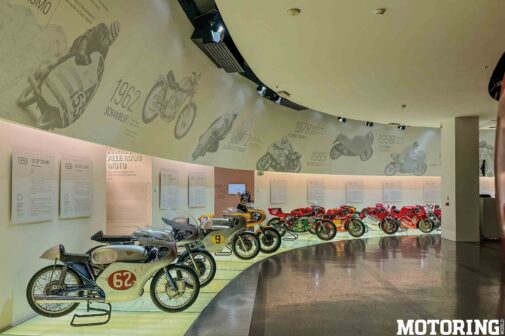
Again, it was far from the biggest automotive museum I’ve been to. But what was contained in that space was historic and evocative. Right from iconic production bikes to downright venerated racing machines, the display was captivating enough to walk around in stunned silence. I mean, what other reaction is appropriate when one approaches Mike ‘The Bike’ Hailwood’s 1978 900 Super Sport with which he won at the Isle Of Man TT — on his racing comeback after 11 years?! Or the gorgeous Desmosedici RR from 2006, the first MotoGP road replica and one of the most amazing motorcycles ever made? And to think it all began from the 1946 Cucciolo (‘puppy’ in Italian), a 48cc 1.5-bhp four-stroke engine that could be attached to bicycles. That old puppy has now grown into an exotic beast.
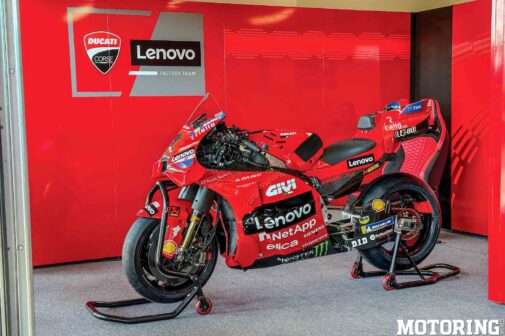
For the next two days, I found myself roaming around the Misano circuit, being mentally apologetic for not believing Europeans when they claimed they were suffering from a heat wave. They were not exaggerating, and the heat made sure I felt like I hadn’t left Mumbai at all. And there they were, riders on their Ducatis in full leathers, their faces redder than their bikes, heading out onto the track. It was a sight to behold — Monsters of all capacities and vintages mixing it up with Panigales, Multistradas, Streetfighters and whatnot. However, what made my day was watching an old black ST4 carving its way past newer and more powerful machines out of the final corner! That rider was clearly more at one with his bike than all the newbies around him.

This year was also the 30th anniversary of the 916 and there were what seemed like hundreds of them at Misano in all sorts of colours and liveries from Ducati’s rich history — which was more than my mind could take, really. There was also a dedicated 916 hall, full of the model’s examples both from the road and the track; here a 916 Senna, there a Carl Fogarty factory racer. Then, in walked Fogarty himself and waved to Troy Bayliss who was being interviewed in front of his own racing bikes. Insane. And all I could ask was why did the Italians call it the ‘nine sixteen’ and not ‘nine one six’ as everyone else always had?
When I posed this question to Livio Lodi, curator of the Ducati Museum and a Ducati employee for more than 40 years, said, ‘It doesn’t matter what you call it, the result was the same! Anyway, in Italian it’s nuevo sedici — nine sixteen — that’s why we say it that way. But 916 is also beautiful.’ Indeed. Massimo Tamburini’s design is one of the masterpieces of all time, of any discipline. Even after staring at it from my teenage years all the way into my 40s, it hasn’t aged one bit. And to be there in person for the bike’s 30th anniversary in person did feel a bit special. Especially when all the 916s in thunderous attendance took to the track for a lap of honour. Goosebumps the size of L-twins, I tell you.
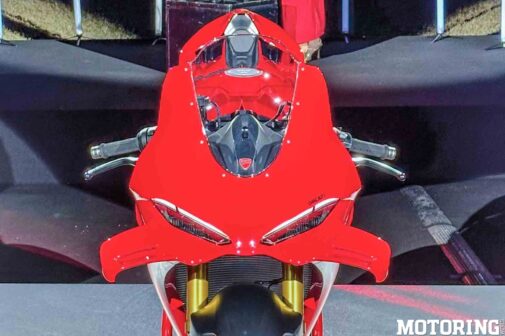
At some point, Ducati’s MotoGP and WSBK racers assembled in the media room for a pre-race conference before the Race Of Champions. Domenicali and Dall’Igna were present, of course, and before any questions arose, the latter was emphatic in his assertion while looking each rider straight in the eyes — ‘Let’s not do something stupid.’ The racing machines in question? The brand new Panigale, which was launched the day before, decked out in each racer’s livery. The first showcase of the bike’s performance by elite racers themselves! That was a masterstroke and a half, I say.
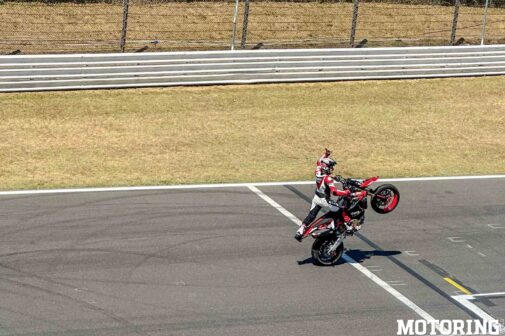
Witnessing the speed of MotoGP riders live again, I reconfirmed that it’s something I can never get used to. The only word for it is ‘unreal’, and I hope none of the new Panigale owners get carried away and try to replicate that kind of space-warping speed, even if the bike is clearly up for it. Those racers inhabit a higher plane of skill, after all. While reigning MotoGP champion, Francesco Bagnaia, won the Race Of Champions, and WSBK’s Andrea Iannone finished second, Marc Marquez wiped out WSBK’s Nicolo Bulega at the last corner on the last lap to complete the podium. Dall’Igna’s aforementioned assertion about stupidity was in vain, after all, and I expected no less.
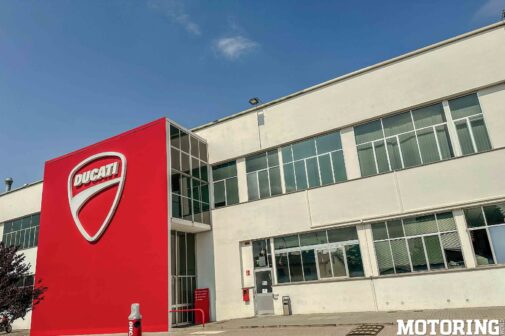
I haven’t seen another place where history and modernity met the way they did at World Ducati Week 2024. From the stuff of folklore to the technological supremacy of modern racing, it was a contrast as rich as it was unbelievable. The vibe was also set by the mad Ducatisti, old and young alike, chasing all the racers down for autographs (on foot) and chilling with their motorcycles when they weren’t. They came in droves on all sorts of Ducatis, too; from original Scramblers from the ’60s and ’70s to Desmosedici RRs, I couldn’t believe what my eyes were watching growling around the venue. Incredible. As for making smaller motorcycles, I hope Ducati does it, but it’s also okay if it doesn’t. Either way, we’ve got a motorcycling story we all love anyway.










